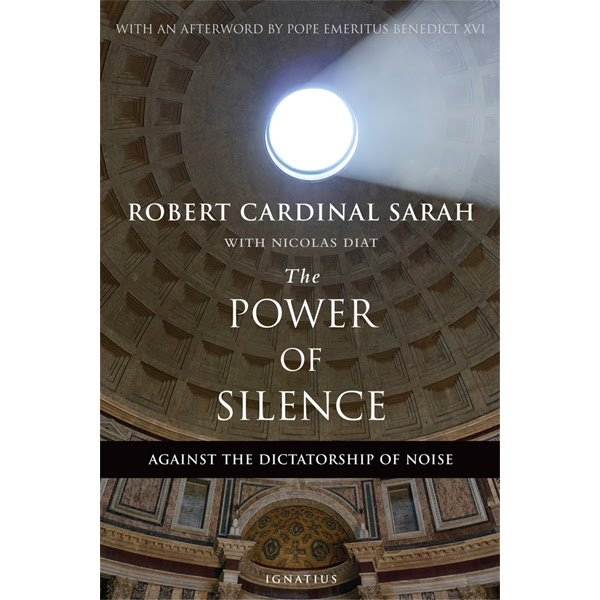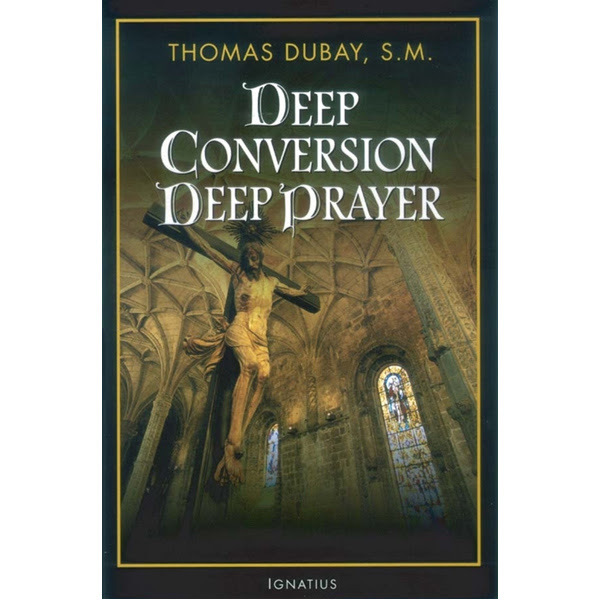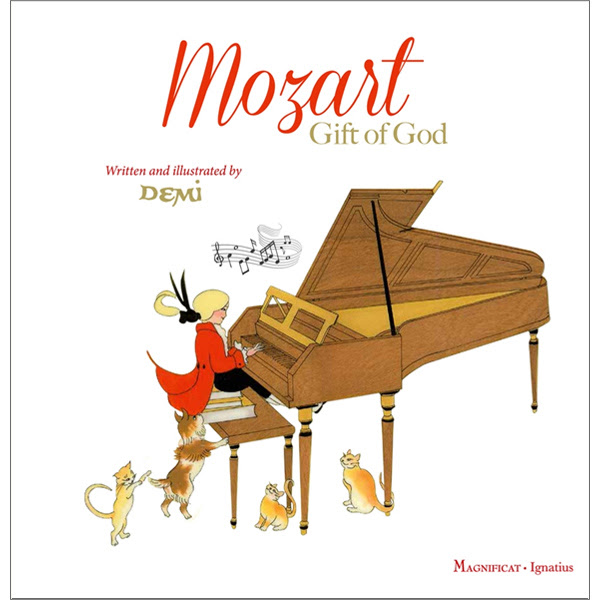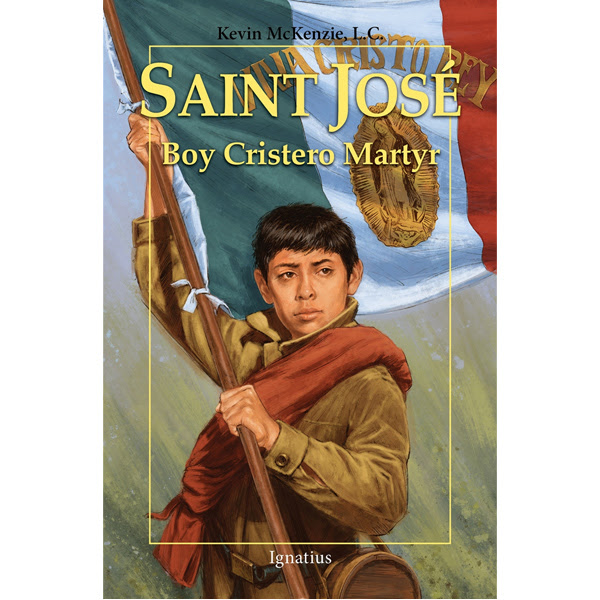| |||||
|
Tuesday, March 31, 2020
✠ Have you heard this Church teaching? [Social Kingship of Christ]
Wisdom from Fr. Michael Gaitley, MIC
Amid the present time of turmoil, let’s now find greater mercy and greater glory in the greatest of the Gospels. Let’s get back to the original source, the Word of God, and let it set us free from our hypocrisy so we might become authentic witnesses of Christ and the beauty of the Church. Let’s learn from the apostle who rested his head on the Heart of Jesus and there discovered the deepest mysteries of the Father’s love. |
|
Monday, March 30, 2020
More Wisdom from Wilfrid Stinissen
That the Eucharist—and thus the whole of Christian life—is a meal shows us that we do not have life in ourselves. We must receive it, eat it. We become what we receive. If we refuse to receive, refuse to eat and drink him, we remain without life. |
|
Wisdom from Wilfrid Stinissen
Strictly speaking, man works not to nourish himself, but rather to nourish his family and loved ones. We are created to give life to others, never to ourselves. |
|
Sunday, March 29, 2020
Fifth Sunday of Lent, Cycle A March 29, 2020
First Reading
Ezekiel 37:12-14
God will open the graves and restore the people of Israel.
Responsorial Psalm
Psalm 130:1-8
With the Lord is forgiveness and mercy.
Second Reading
Romans 8:8-11
The Spirit of God dwells in you.
Gospel Reading
John 11:1-45 (shorter version John 11:3-7,17,20-27,33b-45)
Jesus raises Lazarus from the dead.
Gospel JN 11:1-45
Now a man was ill, Lazarus from Bethany,
the village of Mary and her sister Martha.
Mary was the one who had anointed the Lord with perfumed oil
and dried his feet with her hair;
it was her brother Lazarus who was ill.
So the sisters sent word to him saying,
“Master, the one you love is ill.”
When Jesus heard this he said,
“This illness is not to end in death,
but is for the glory of God,
that the Son of God may be glorified through it.”
Now Jesus loved Martha and her sister and Lazarus.
So when he heard that he was ill,
he remained for two days in the place where he was.
Then after this he said to his disciples,
“Let us go back to Judea.”
The disciples said to him,
“Rabbi, the Jews were just trying to stone you,
and you want to go back there?”
Jesus answered,
“Are there not twelve hours in a day?
If one walks during the day, he does not stumble,
because he sees the light of this world.
But if one walks at night, he stumbles,
because the light is not in him.”
He said this, and then told them,
“Our friend Lazarus is asleep,
but I am going to awaken him.”
So the disciples said to him,
“Master, if he is asleep, he will be saved.”
But Jesus was talking about his death,
while they thought that he meant ordinary sleep.
So then Jesus said to them clearly,
“Lazarus has died.
And I am glad for you that I was not there,
that you may believe.
Let us go to him.”
So Thomas, called Didymus, said to his fellow disciples,
“Let us also go to die with him.”
When Jesus arrived, he found that Lazarus
had already been in the tomb for four days.
Now Bethany was near Jerusalem, only about two miles away.
And many of the Jews had come to Martha and Mary
to comfort them about their brother.
When Martha heard that Jesus was coming,
she went to meet him;
but Mary sat at home.
Martha said to Jesus,
“Lord, if you had been here,
my brother would not have died.
But even now I know that whatever you ask of God,
God will give you.”
Jesus said to her,
“Your brother will rise.”
Martha said to him,
“I know he will rise,
in the resurrection on the last day.”
Jesus told her,
“I am the resurrection and the life;
whoever believes in me, even if he dies, will live,
and everyone who lives and believes in me will never die.
Do you believe this?”
She said to him, “Yes, Lord.
I have come to believe that you are the Christ, the Son of God,
the one who is coming into the world.”
had already been in the tomb for four days.
Now Bethany was near Jerusalem, only about two miles away.
And many of the Jews had come to Martha and Mary
to comfort them about their brother.
When Martha heard that Jesus was coming,
she went to meet him;
but Mary sat at home.
Martha said to Jesus,
“Lord, if you had been here,
my brother would not have died.
But even now I know that whatever you ask of God,
God will give you.”
Jesus said to her,
“Your brother will rise.”
Martha said to him,
“I know he will rise,
in the resurrection on the last day.”
Jesus told her,
“I am the resurrection and the life;
whoever believes in me, even if he dies, will live,
and everyone who lives and believes in me will never die.
Do you believe this?”
She said to him, “Yes, Lord.
I have come to believe that you are the Christ, the Son of God,
the one who is coming into the world.”
When she had said this,
she went and called her sister Mary secretly, saying,
“The teacher is here and is asking for you.”
As soon as she heard this,
she rose quickly and went to him.
For Jesus had not yet come into the village,
but was still where Martha had met him.
So when the Jews who were with her in the house comforting her
saw Mary get up quickly and go out,
they followed her,
presuming that she was going to the tomb to weep there.
When Mary came to where Jesus was and saw him,
she fell at his feet and said to him,
“Lord, if you had been here,
my brother would not have died.”
When Jesus saw her weeping and the Jews who had come with her weeping,
he became perturbed and deeply troubled, and said,
“Where have you laid him?”
They said to him, “Sir, come and see.”
And Jesus wept.
So the Jews said, “See how he loved him.”
But some of them said,
“Could not the one who opened the eyes of the blind man
have done something so that this man would not have died?”
she went and called her sister Mary secretly, saying,
“The teacher is here and is asking for you.”
As soon as she heard this,
she rose quickly and went to him.
For Jesus had not yet come into the village,
but was still where Martha had met him.
So when the Jews who were with her in the house comforting her
saw Mary get up quickly and go out,
they followed her,
presuming that she was going to the tomb to weep there.
When Mary came to where Jesus was and saw him,
she fell at his feet and said to him,
“Lord, if you had been here,
my brother would not have died.”
When Jesus saw her weeping and the Jews who had come with her weeping,
he became perturbed and deeply troubled, and said,
“Where have you laid him?”
They said to him, “Sir, come and see.”
And Jesus wept.
So the Jews said, “See how he loved him.”
But some of them said,
“Could not the one who opened the eyes of the blind man
have done something so that this man would not have died?”
So Jesus, perturbed again, came to the tomb.
It was a cave, and a stone lay across it.
Jesus said, “Take away the stone.”
Martha, the dead man’s sister, said to him,
“Lord, by now there will be a stench;
he has been dead for four days.”
Jesus said to her,
“Did I not tell you that if you believe
you will see the glory of God?”
So they took away the stone.
And Jesus raised his eyes and said,
“Father, I thank you for hearing me.
I know that you always hear me;
but because of the crowd here I have said this,
that they may believe that you sent me.”
And when he had said this,
He cried out in a loud voice,
“Lazarus, come out!”
The dead man came out,
tied hand and foot with burial bands,
and his face was wrapped in a cloth.
So Jesus said to them,
“Untie him and let him go.”
It was a cave, and a stone lay across it.
Jesus said, “Take away the stone.”
Martha, the dead man’s sister, said to him,
“Lord, by now there will be a stench;
he has been dead for four days.”
Jesus said to her,
“Did I not tell you that if you believe
you will see the glory of God?”
So they took away the stone.
And Jesus raised his eyes and said,
“Father, I thank you for hearing me.
I know that you always hear me;
but because of the crowd here I have said this,
that they may believe that you sent me.”
And when he had said this,
He cried out in a loud voice,
“Lazarus, come out!”
The dead man came out,
tied hand and foot with burial bands,
and his face was wrapped in a cloth.
So Jesus said to them,
“Untie him and let him go.”
Now many of the Jews who had come to Mary
and seen what he had done began to believe in him.
Background on the Gospel Reading
Our Gospel on this day, the fifth Sunday of Lent, is again taken from the Gospel according to John. The reading from John continues the break from Cycle A’s focus on the Gospel of Matthew. Today’s Gospel reading recounts another sign, or miracle, found in John’s Gospel, the raising of Lazarus. As our catechumens move closer to the celebration of their Baptisms at the Triduum, today’s reading invites us to reflect upon what it means to call Jesus the Resurrection and the life.
The context for the story of the raising of Lazarus is the Jewish leaders’ growing animosity toward Jesus. Jesus has been in Jerusalem, taking part in the feast of the Dedication, which we have come to know as Hanukkah. The people have been pressing him to declare plainly whether he is the Messiah. Jesus tells them to look to his works, which testify to his coming from God. Many do not believe Jesus, however, and some try to stone him for blasphemy.
Into this scene of confrontation, Mary and Martha, the sisters of Lazarus, send word to Jesus that his friend is ill. Jesus is said to love Mary, Martha, and Lazarus, but he delays his journey for two days. The delay heightens the drama and shows Jesus’ obedience to God, who is to be glorified through Lazarus’s resurrection. When Jesus finally declares that he will journey to Bethany, his disciples fear for his life. Thomas declares that he and the other disciples should prepare to die with Jesus.
The scene described at Bethany is a sad one. Martha meets Jesus weeping and saying that if Jesus had been there, Lazarus would not have died. Yet she remains confident that God will do whatever Jesus asks. Martha affirms her belief that there will be a resurrection of the dead in the last days. Then Martha’s sister, Mary, comes to Jesus with the same confidence, saying that Jesus could have cured Lazarus. Jesus asks to be brought to Lazarus’s tomb where he prays and calls Lazarus out from the tomb. At this sign, many come to believe in Jesus, but others take word of the miracle to the Jewish authorities, who begin their plans for Jesus’ death.
Set against the backdrop of Jesus’ impending death, many elements of the raising of Lazarus foreshadow the good news of Jesus’ own Resurrection. Jesus, facing the conflict with the Jewish authorities, acts in complete obedience to God. In raising Lazarus, Jesus shows his power over death so that when Jesus dies, those who believe in him might remember that and take hope. Just as Jesus calls for the stone to be rolled away from Lazarus’s tomb, so too will the disciples find the stone rolled away from Jesus’ tomb.
With our catechumens preparing for their Baptism at Easter, the Gospel today calls us to reflect on Baptism as a dying and rising with Jesus. In Baptism we die to sin’s power over us, rising as children of God. In Baptism we join ourselves with Christ, who conquered death once and for all so that we who believe in him may have eternal life. With Martha and Mary, we are called to profess our belief that Jesus is indeed the Resurrection and the life.
Family Connection
Jesus’ promise of eternal life is a central element of our Catholic faith. Even though Easter is still two weeks away, our Gospel today invites us to acknowledge Jesus’ power over death, evidenced in the raising of Lazarus, and to anticipate Jesus’ conquering of death once and for all in his death and Resurrection. We sometimes use examples from nature to help describe this mystery of our faith. Jesus himself talked about the seed that dies when planted in the ground in order to produce new life (John 12:24). Using that image and others, we find hope and confidence in Jesus, the Resurrection and the life.
Gather your family today and read today’s Gospel in its shorter form, John 11:3-7,17,20-27,33b-45. Write Jesus’ promise from today’s Gospel (“I am the resurrection and the life.”) on a large sheet of white paper. As your family talks about what Jesus means by this promise, decorate Jesus’ words with symbols that will remind you of his promise of eternal life. Display this reminder of Jesus’ promise in a prominent place in your home and keep it there until Easter. Pray that you will always remain confident in Jesus’ promise of eternal life. Conclude by praying together the Apostles’ Creed or the Nicene Creed.
Sources: Loyola Press; Sunday Readings
and seen what he had done began to believe in him.
Background on the Gospel Reading
Our Gospel on this day, the fifth Sunday of Lent, is again taken from the Gospel according to John. The reading from John continues the break from Cycle A’s focus on the Gospel of Matthew. Today’s Gospel reading recounts another sign, or miracle, found in John’s Gospel, the raising of Lazarus. As our catechumens move closer to the celebration of their Baptisms at the Triduum, today’s reading invites us to reflect upon what it means to call Jesus the Resurrection and the life.
The context for the story of the raising of Lazarus is the Jewish leaders’ growing animosity toward Jesus. Jesus has been in Jerusalem, taking part in the feast of the Dedication, which we have come to know as Hanukkah. The people have been pressing him to declare plainly whether he is the Messiah. Jesus tells them to look to his works, which testify to his coming from God. Many do not believe Jesus, however, and some try to stone him for blasphemy.
Into this scene of confrontation, Mary and Martha, the sisters of Lazarus, send word to Jesus that his friend is ill. Jesus is said to love Mary, Martha, and Lazarus, but he delays his journey for two days. The delay heightens the drama and shows Jesus’ obedience to God, who is to be glorified through Lazarus’s resurrection. When Jesus finally declares that he will journey to Bethany, his disciples fear for his life. Thomas declares that he and the other disciples should prepare to die with Jesus.
The scene described at Bethany is a sad one. Martha meets Jesus weeping and saying that if Jesus had been there, Lazarus would not have died. Yet she remains confident that God will do whatever Jesus asks. Martha affirms her belief that there will be a resurrection of the dead in the last days. Then Martha’s sister, Mary, comes to Jesus with the same confidence, saying that Jesus could have cured Lazarus. Jesus asks to be brought to Lazarus’s tomb where he prays and calls Lazarus out from the tomb. At this sign, many come to believe in Jesus, but others take word of the miracle to the Jewish authorities, who begin their plans for Jesus’ death.
Set against the backdrop of Jesus’ impending death, many elements of the raising of Lazarus foreshadow the good news of Jesus’ own Resurrection. Jesus, facing the conflict with the Jewish authorities, acts in complete obedience to God. In raising Lazarus, Jesus shows his power over death so that when Jesus dies, those who believe in him might remember that and take hope. Just as Jesus calls for the stone to be rolled away from Lazarus’s tomb, so too will the disciples find the stone rolled away from Jesus’ tomb.
With our catechumens preparing for their Baptism at Easter, the Gospel today calls us to reflect on Baptism as a dying and rising with Jesus. In Baptism we die to sin’s power over us, rising as children of God. In Baptism we join ourselves with Christ, who conquered death once and for all so that we who believe in him may have eternal life. With Martha and Mary, we are called to profess our belief that Jesus is indeed the Resurrection and the life.
Family Connection
Jesus’ promise of eternal life is a central element of our Catholic faith. Even though Easter is still two weeks away, our Gospel today invites us to acknowledge Jesus’ power over death, evidenced in the raising of Lazarus, and to anticipate Jesus’ conquering of death once and for all in his death and Resurrection. We sometimes use examples from nature to help describe this mystery of our faith. Jesus himself talked about the seed that dies when planted in the ground in order to produce new life (John 12:24). Using that image and others, we find hope and confidence in Jesus, the Resurrection and the life.
Gather your family today and read today’s Gospel in its shorter form, John 11:3-7,17,20-27,33b-45. Write Jesus’ promise from today’s Gospel (“I am the resurrection and the life.”) on a large sheet of white paper. As your family talks about what Jesus means by this promise, decorate Jesus’ words with symbols that will remind you of his promise of eternal life. Display this reminder of Jesus’ promise in a prominent place in your home and keep it there until Easter. Pray that you will always remain confident in Jesus’ promise of eternal life. Conclude by praying together the Apostles’ Creed or the Nicene Creed.
Sources: Loyola Press; Sunday Readings
Saturday, March 28, 2020
Kids at Home? The Catholic Books You Need at 35% Off!
|
|
|
|
|
|
|
|
|
|
|
|
|
|
|
|
|
|
|
Friday, March 27, 2020
Ignatius Press is offering a big discount on great books!
|
|
|
|
|
| ||
|
|
|
|
| ||
|
|
|
|
| ||
|
|
|
|
| ||
|
|
|
|
Subscribe to:
Comments (Atom)









































